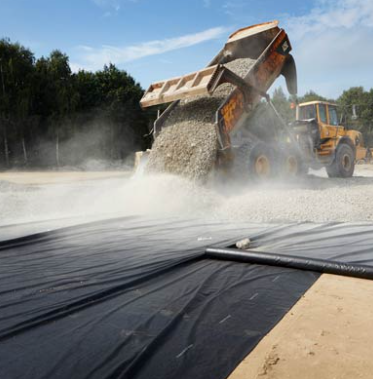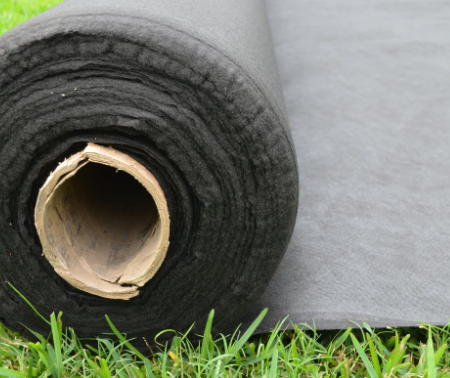- Understanding the Role of Geomembrane Liners in Waste Management
- Innovations in Geomembrane Liners for Water Management
- Geomembrane Liners: A Comprehensive Guide
- The Future of Geomembrane Liners in Civil Engineering
- Geomembrane Liners: Enhancing Landfill Stability
Manager:
WhatsApp:+86 177 0135 2670
Tel:+86 177 0135 2670
Email:marketing@okorder.com
Address:3rd Floor, No.2 Building, No.1 Sanlihe Road
What is another name for geotextile?
Geotextiles have become indispensable in modern engineering and construction projects, serving a variety of functions that enhance stability, drainage, and soil reinforcement. While the term "geotextile" is widely recognized, there are specific types that go by different names, each tailored to address distinct needs in the field of geotechnical engineering.

Understanding Plastic Geogrids
Plastic geogrids otherwise referred to as polymer geogrids represent a major advancement in geosynthetic technology. These grids are composed of high-density polyethylene (HDPE), polypropylene (PP), or other polymer materials. They primarily provide soil reinforcement making them very essential in applications where stability and load distribution are most important.
The open grid structure of plastic geogrids facilitates efficient soil interlock and confinement which allows it to survive high tensile forces which prevent erosion especially on steep slopes or areas prone to ground movements. Moreover, their lightweight properties ensure easy installation leading to labor savings and project speed ups.
In wholesale geogrid applications, large quantities of plastic geogrids are often procured to meet the demands of extensive projects. Contractors and developers undertaking large-scale ventures prefer this method because it offers cost savings and ensures consistent quality across all geogrid components.
Exploring Fiberglass Geogrids
Fiberglass geogrids are manufactured from fiberglass filaments that form a mesh-like pattern as the name suggests. This type of grid has superior tensile strength and long lastingness making it ideal for severe conditions such as road building, pavement strengthening or retaining wall support.
One thing that makes fiberglass geogrid superior over others is its resilience against chemical degradation as well as environmental factors such as moisture and UV exposure; hence guaranteeing long-term performance with minimal maintenance requirement thus promoting infrastructure sustainability.
glassfiber geogrids refer to fiberglass ones since glassfiber indicates the material used which supports their applicability in a harsh environment. This is because the addition of glass fibers increases grid rigidity and dimensional stability, allowing it to distribute loads effectively thus minimizing deformations in engineered soil structures.
Comparing Plastic, Fiberglass, and Glassfiber Geogrids
While plastic, fiberglass, and glassfiber geogrids share the common goal of soil reinforcement, each type offers unique characteristics that cater to specific project requirements. Plastic geogrids are lightweight and flexible hence suitable for situations requiring such solutions while strength and durability define fiberglass and glassfiber geogrids particularly for heavy-duty applications.
When it comes to installation procedures, plastic geogrids stand out due to their ease of handling as well as maneuverability making them perfect for projects with restricted access or complex geometries. Fiberglass as well as glass fiber grids though stiffer have a superior bearing capacity; therefore they are prominent where high structural consideration is needed.
Cost factors also affect choice of appropriate geogrid type for specific application. Normally plastic geogrids provide an inexpensive solution mostly when bought in bulk or wholesale terms. Although fiberglass and glassfiber geogrids might require high initial capital outlay, they offer lifetime value through extended life period coupled with reliability.

Conclusion
In summation, while the term “geotextile” encompasses all kinds of geosynthetic materials designed to stabilize soils; some examples include plastic ones like fiberglass or even those made from glass fiber such as glassfiber grids that present different approaches towards soil reinforcement. With light weight designs that are friendly on costs use plastic grids can be applied extensively but fiberglass products provide better strength features especially in tough environments.
Geogrid types are better understood through this understanding, allowing engineers, contractors and project managers to make informed decisions based on the requirements of a project with regard to its budget and long-term performance objectives. With their adaptability and efficiency in road improvement, slope stabilization or reinforcement of retaining walls, geogrids have played a major role in promoting success as well as environmental responsibility in civil engineering projects globally.
-
2024-06-12Asphalt fiberglass geogrid construction plan
-
2024-06-04Asphalt fiberglass geogrid construction plan
-
2024-05-21What is the disadvantage of geogrid?
-
2024-05-21What is the lifespan of geogrid?
-
2024-05-21What are the 3 main uses of a geotextile?






